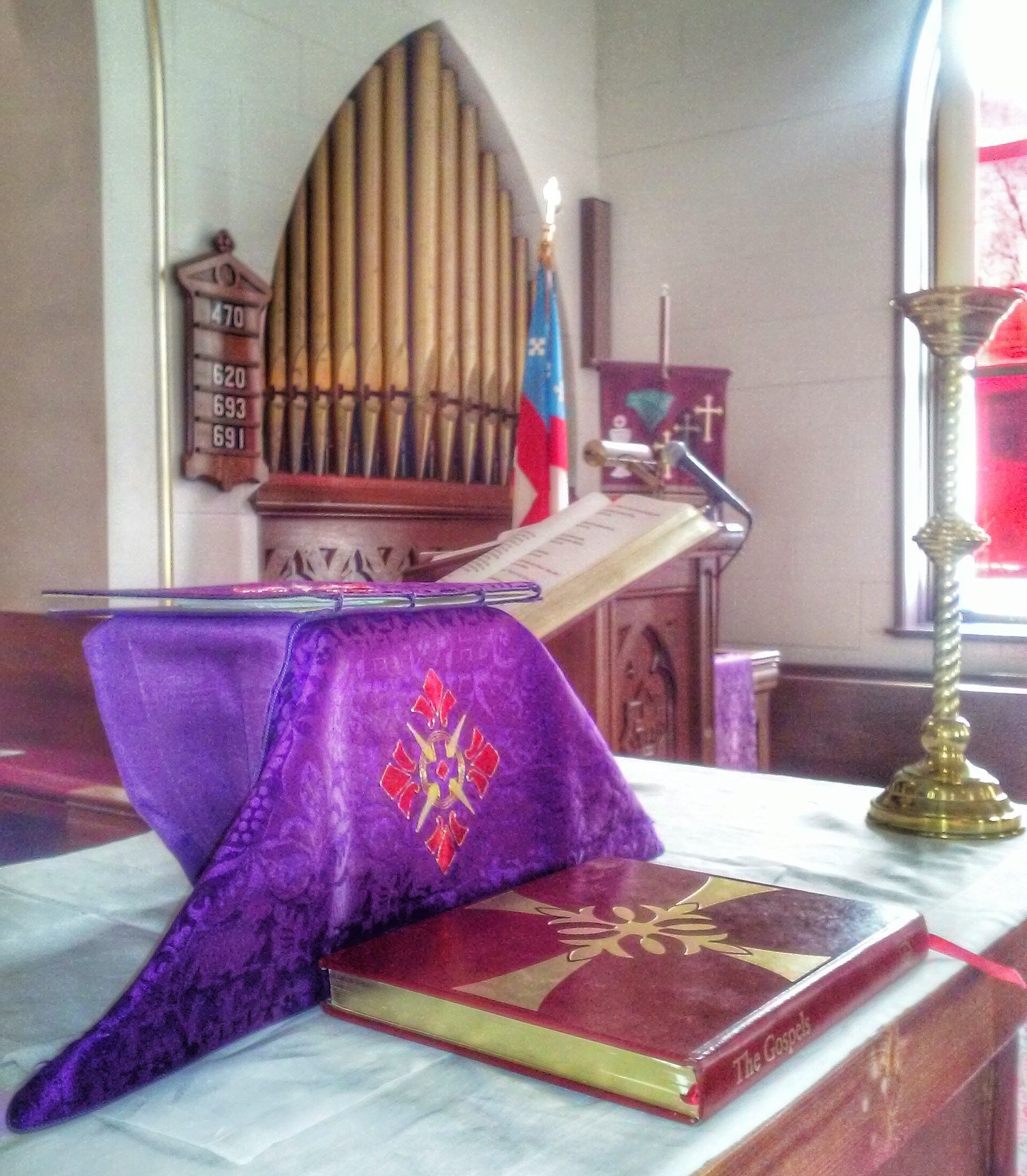Photo Credit: T. Rose
Our History
A brief history of Christ Episcopal Church

How We Got Here
Among the early settlers from the eastern United States, were Episcopalians who had separated from the Church of England during the American Revolution. In 1835 Bishop Jackson Kemper from Connecticut was assigned to the Western Territories as teh first Missionary Bishop.
Prior to the Louisiana Purchase, non-Catholic worship was forbidden West of the Mississippi River due to its occupation by Catholic French and Spanish (settlers).
When Bishop Kemper arrived at Boonville he found the Rev. F.F. Peake already leading a congregation which met at the Jefferson House at 6th and High Streets. This group formed the beginning of Christ Church, the oldest Episcopal Church west of St. Louis, Missouri.
The lot (4th and Vine) was purchased in 1841 and the deed lists Jackson Kemper, James G. Martin, and Chester B. Powell as trustees. Construction did not begin until 1844 after the Rev. Almon D. Corbin (sic. Corbyn) became rector. Services were held a the northwest corner of Main and High streets and later in a frame building on the southeast corner of Main and Spring streets. At the latter location in 1844 the first pipe organ music was heard in Boonville played on an instrument loaned from Jefferson City.
The new church was consecrated September 24, 1846. The bricks were possibly fired on the lot next door. A one-story rectory was build in 1840 behind the church. The Rev. Corbyn married Miss Virginia Buckner of Boonville.
The bell was cast in Britain* and is inscribed: “I praise God, I call the living, I toll for the dead.” The building resembles Enlgish country church.* The square bell tower once had four small spires – one at each corner – representing the four Evangelists.
In 1854 a new organ was purchased – the “largest west of the Mississippi River.”
The rectory added a second story in 1876 and was again enlarged in 1908. It was demolished in teh 1980s. Glass shards found on the land indicate that the Communion wine could have been obtained from Mr. Hain, a vintner who lived nearby to the north as early as the 1850s.
The Civil War era in the 1860s was a difficult time for area churches. The Union occupation and war cruelties resulted in a rapid turnover of ministers. The Rev. F.R. Holeman was banished to Canada for “refusing to take the oath” [of loyalty to the Union]. Church records prior to 1867 have been lost, but partially reconstructed from other sources.
Holeman returned in 1867 and conducted a successful parish school of 50 scholars. During this time the original painted windows were replaced with stained glass. There were 124 members.
The Rev. Abiel Leonard sesrved at Christ Church, 1874-1875, prior to becoming the Bishop of Nevada and Utah.
Among the many memorial gifts of interest are the chalice and paten, given by Bishop Jackson Kemper and the old black walnut collection plates, which were made from a tree found 34 feet below the Missouri River bed, believed to be over 1000 years old. Donated in 1915 by Capt. G.T. Boyce it is believed that the wood was discovered during excation for the construction of the Missouri (River) highway bridge of 1915-1997.
The vestry room to the north was added in 1929. The walnut paneling around the altar was completed in 1965, as a gift of the Bell family.
Christ Church is listed in the National Register of Historic Places.
Composed by M.P. Holmes, 2006
*Other histories indicate it was from the northeast United States which seems more likley.


